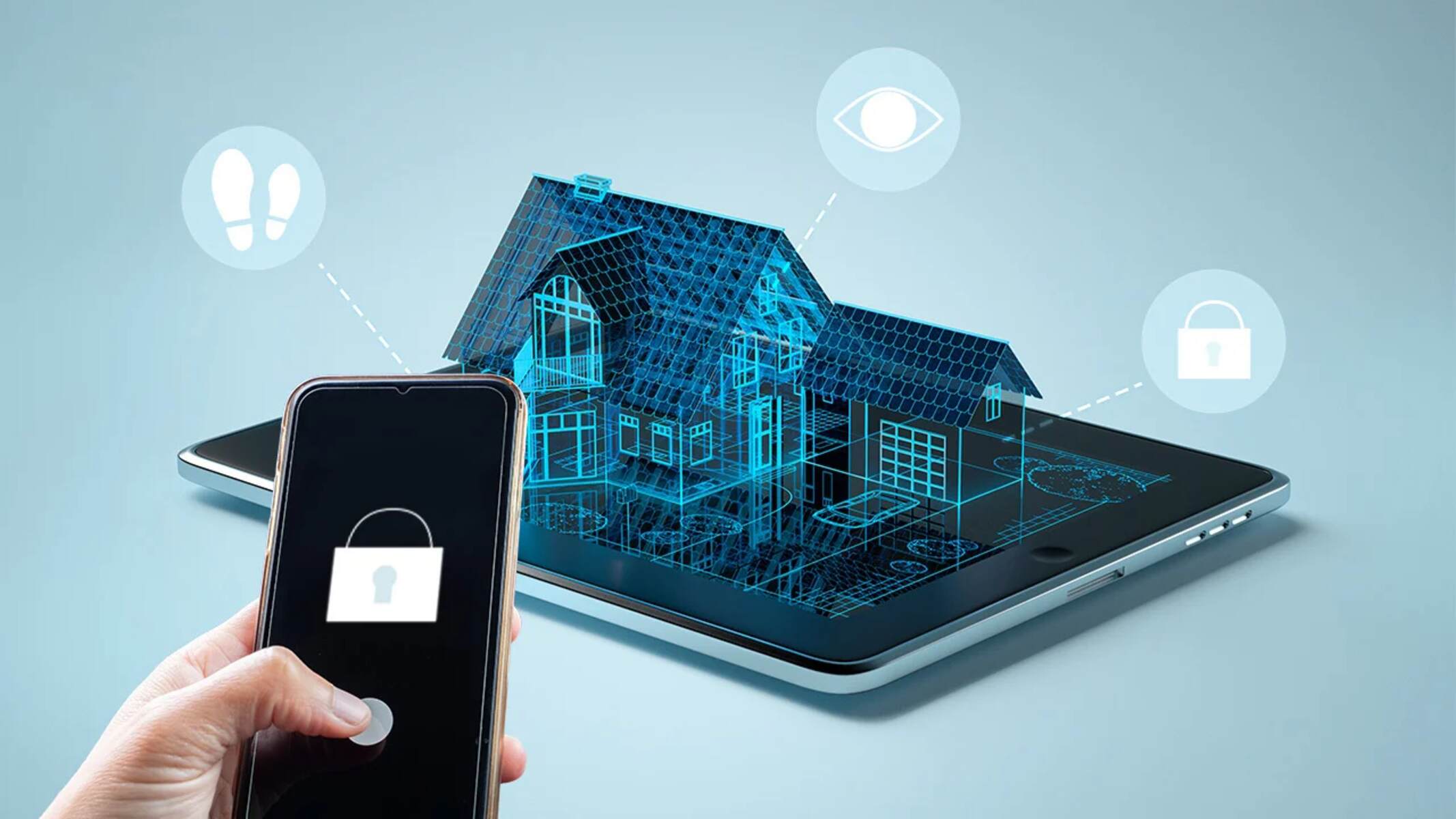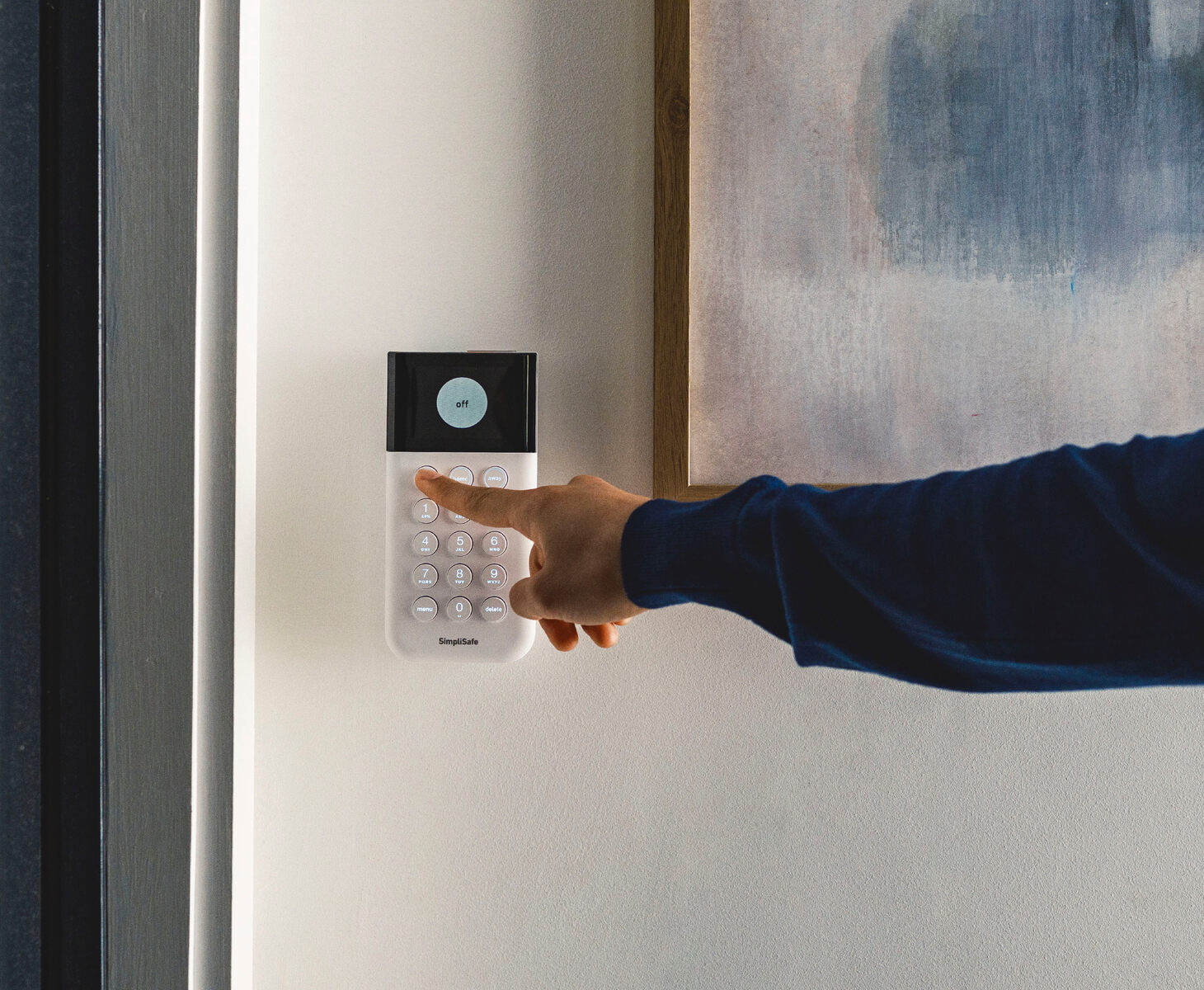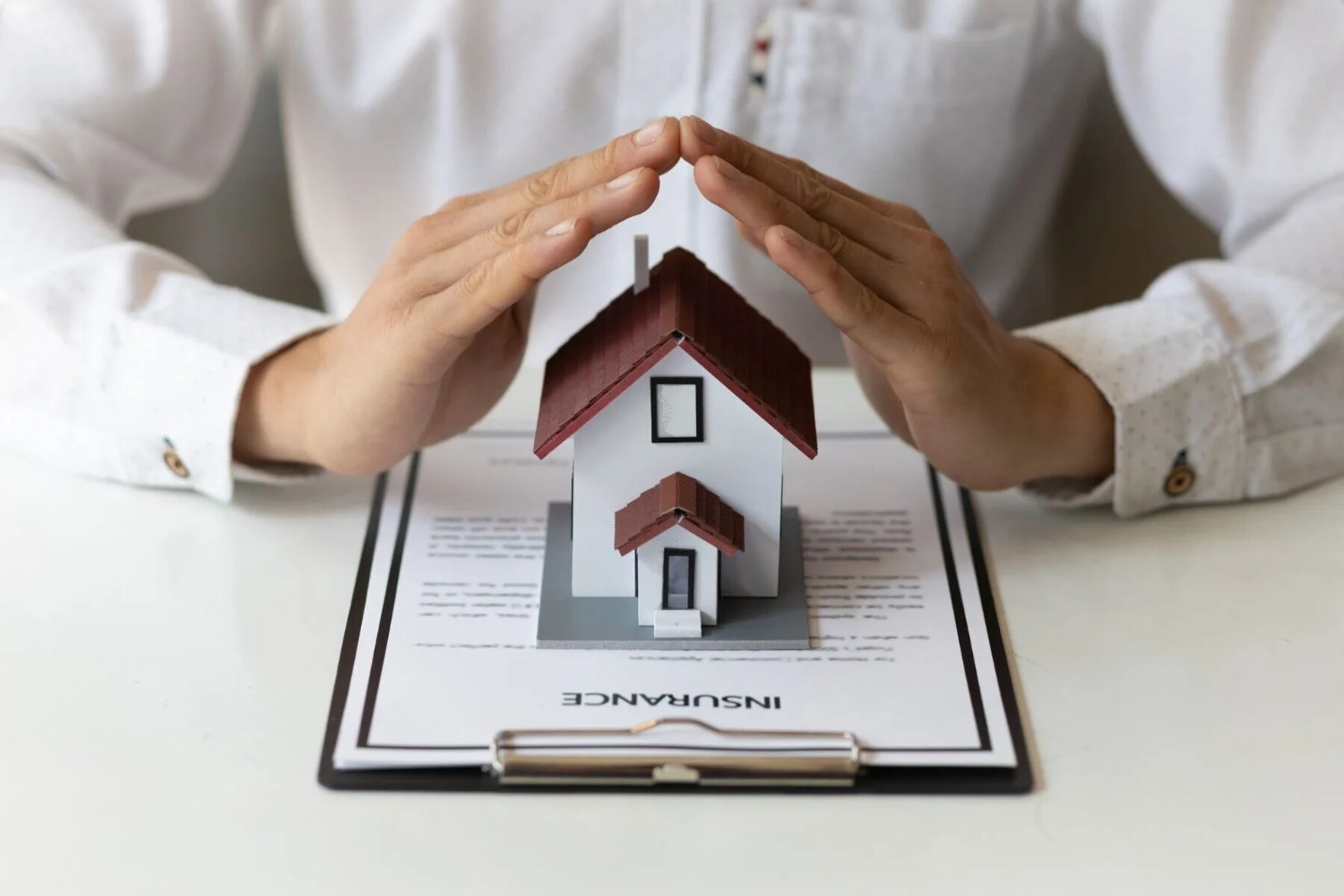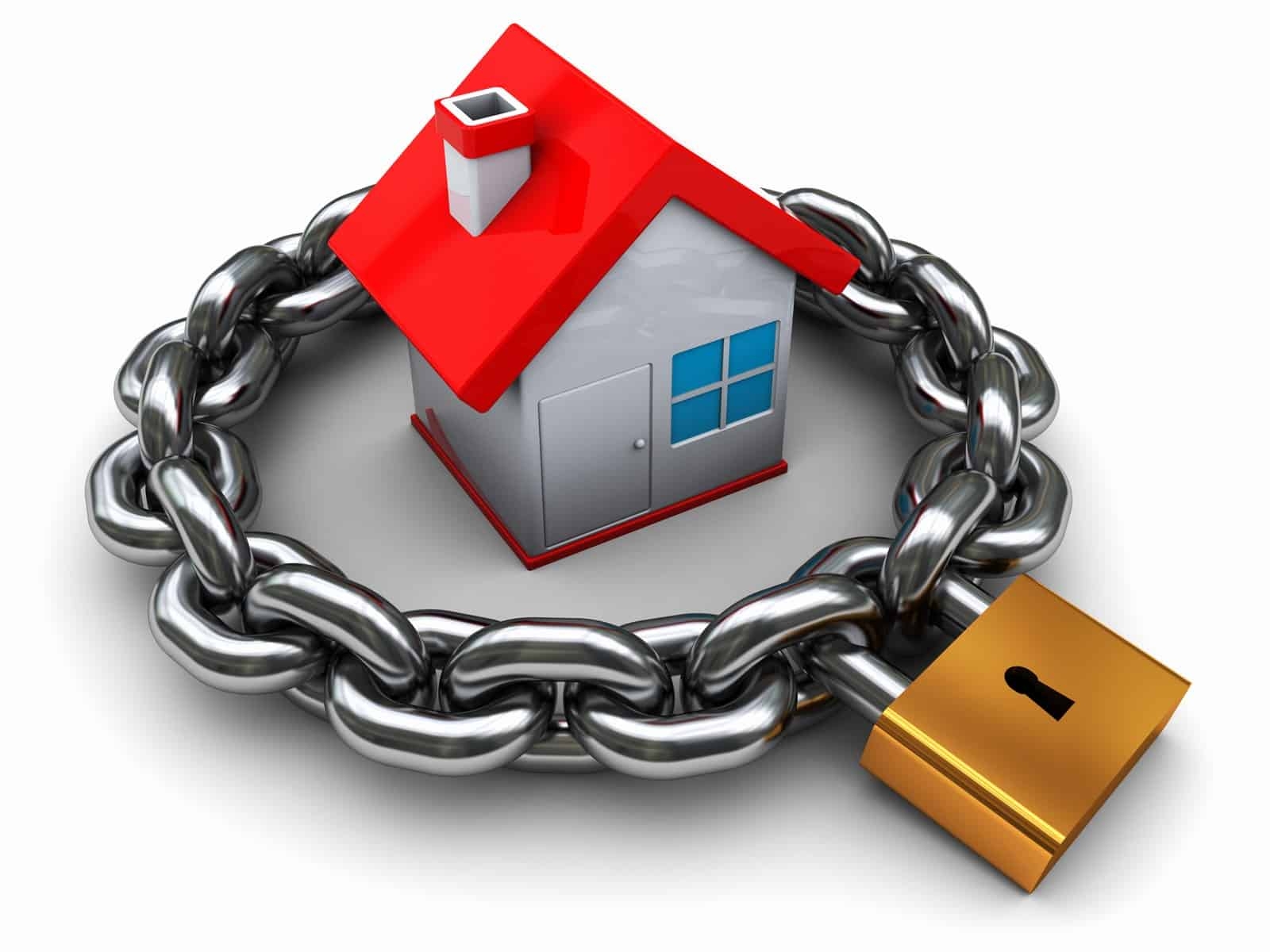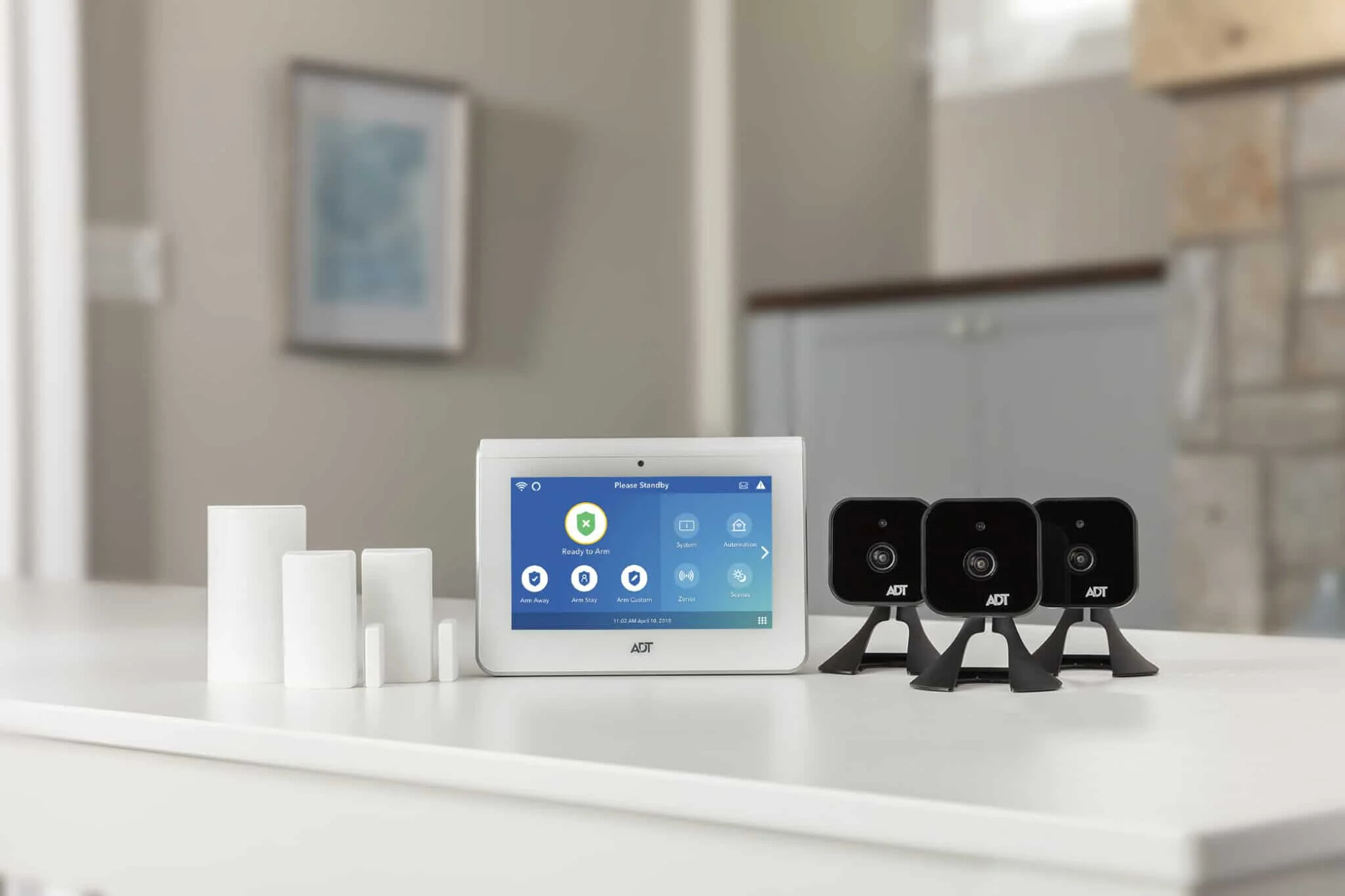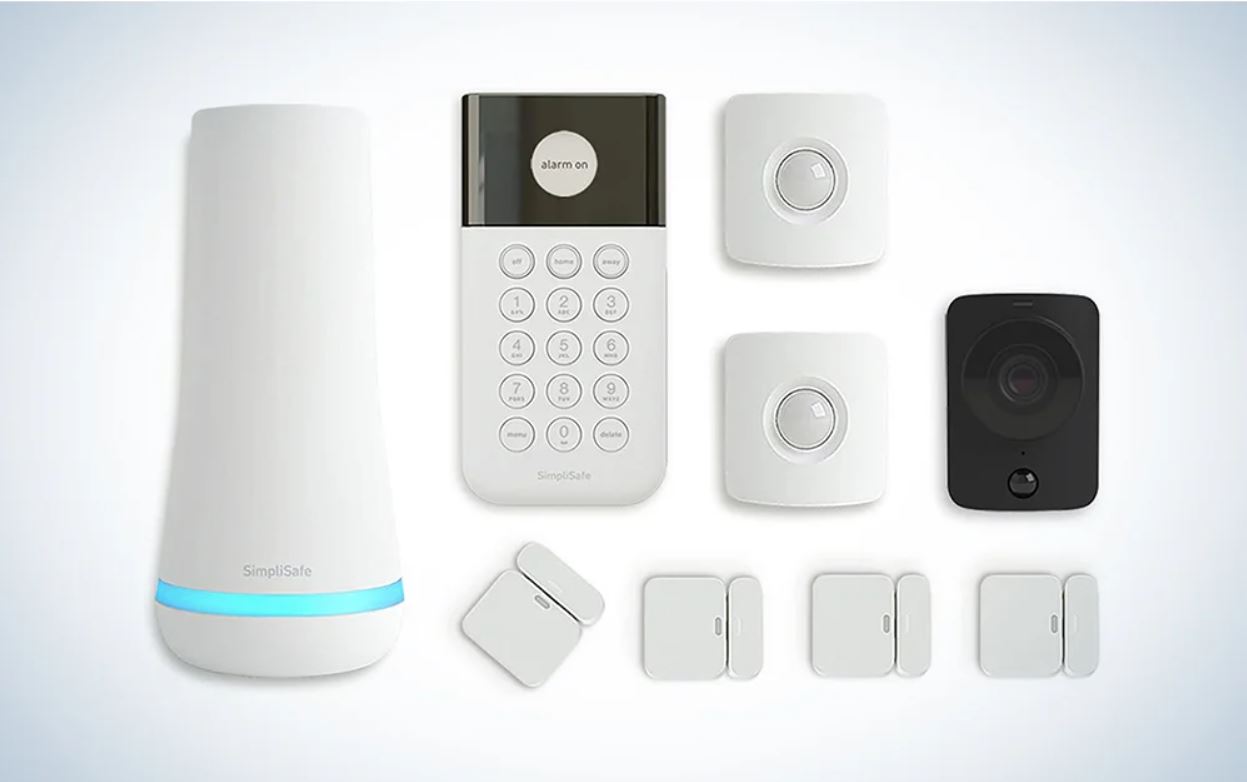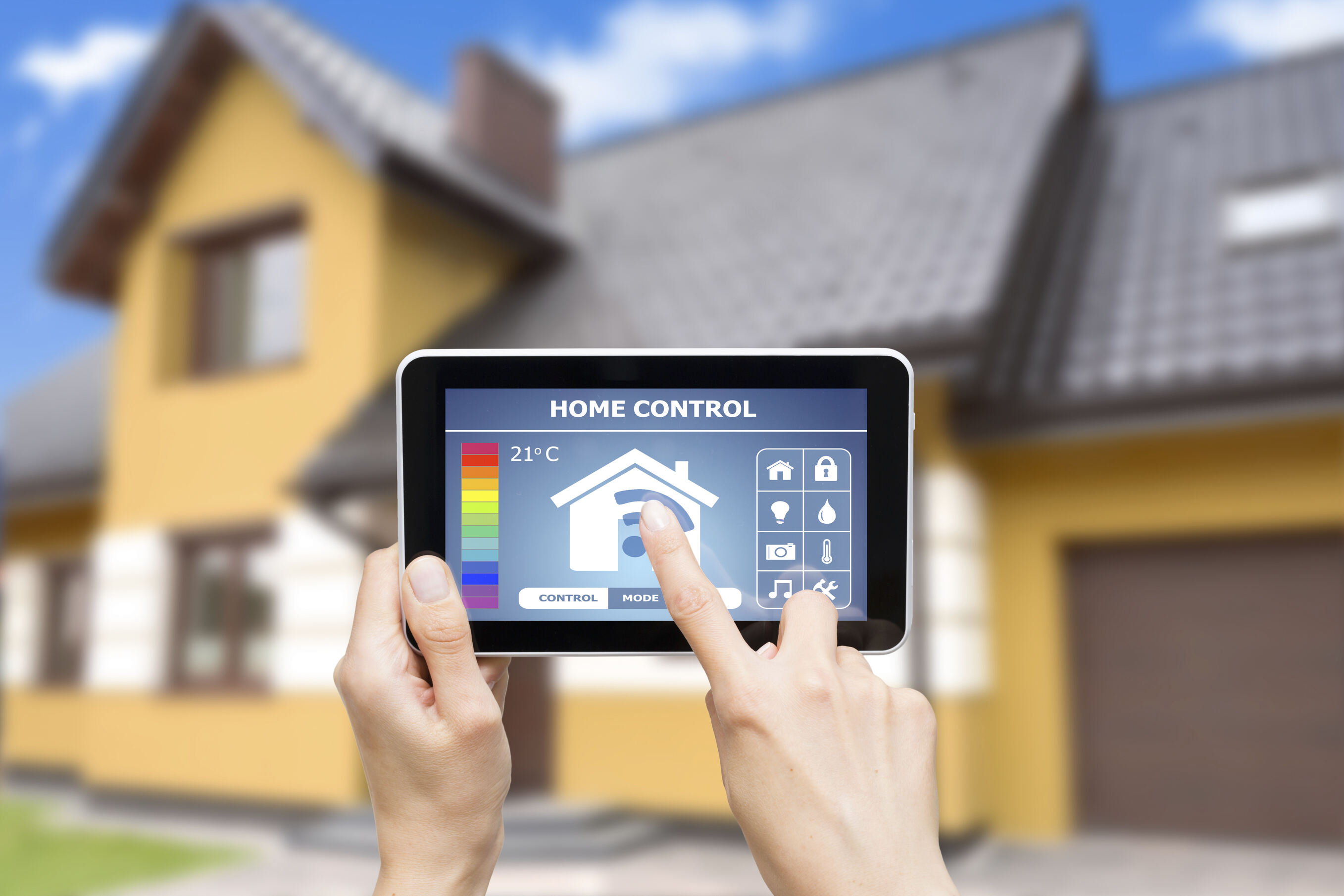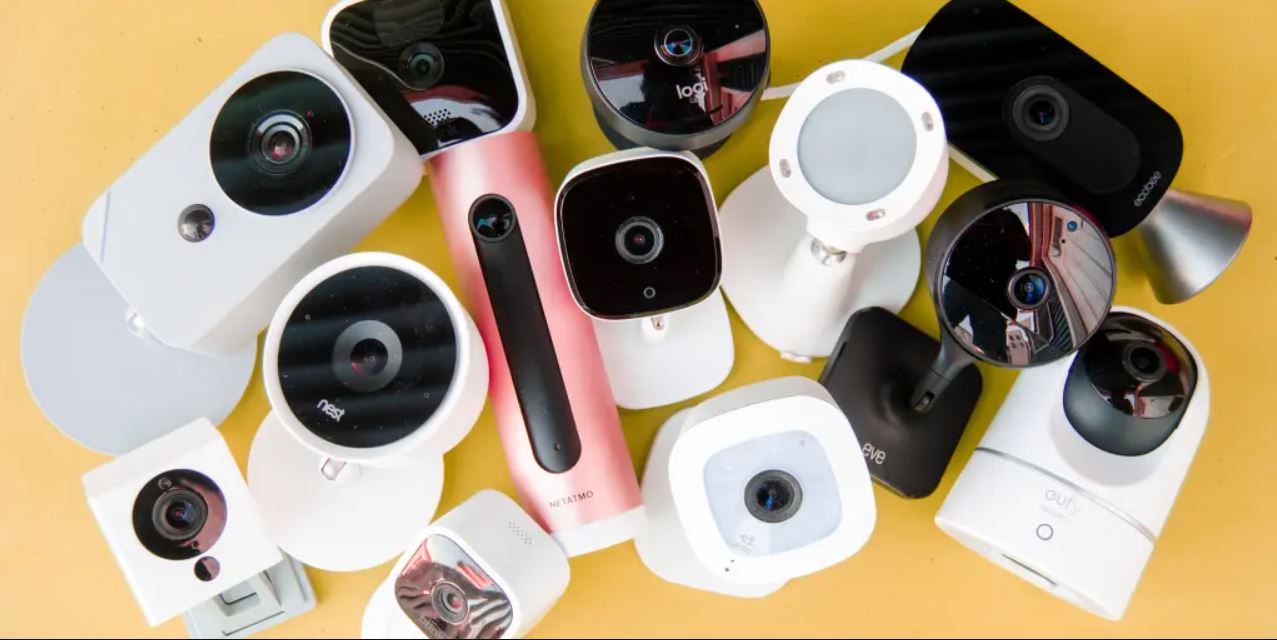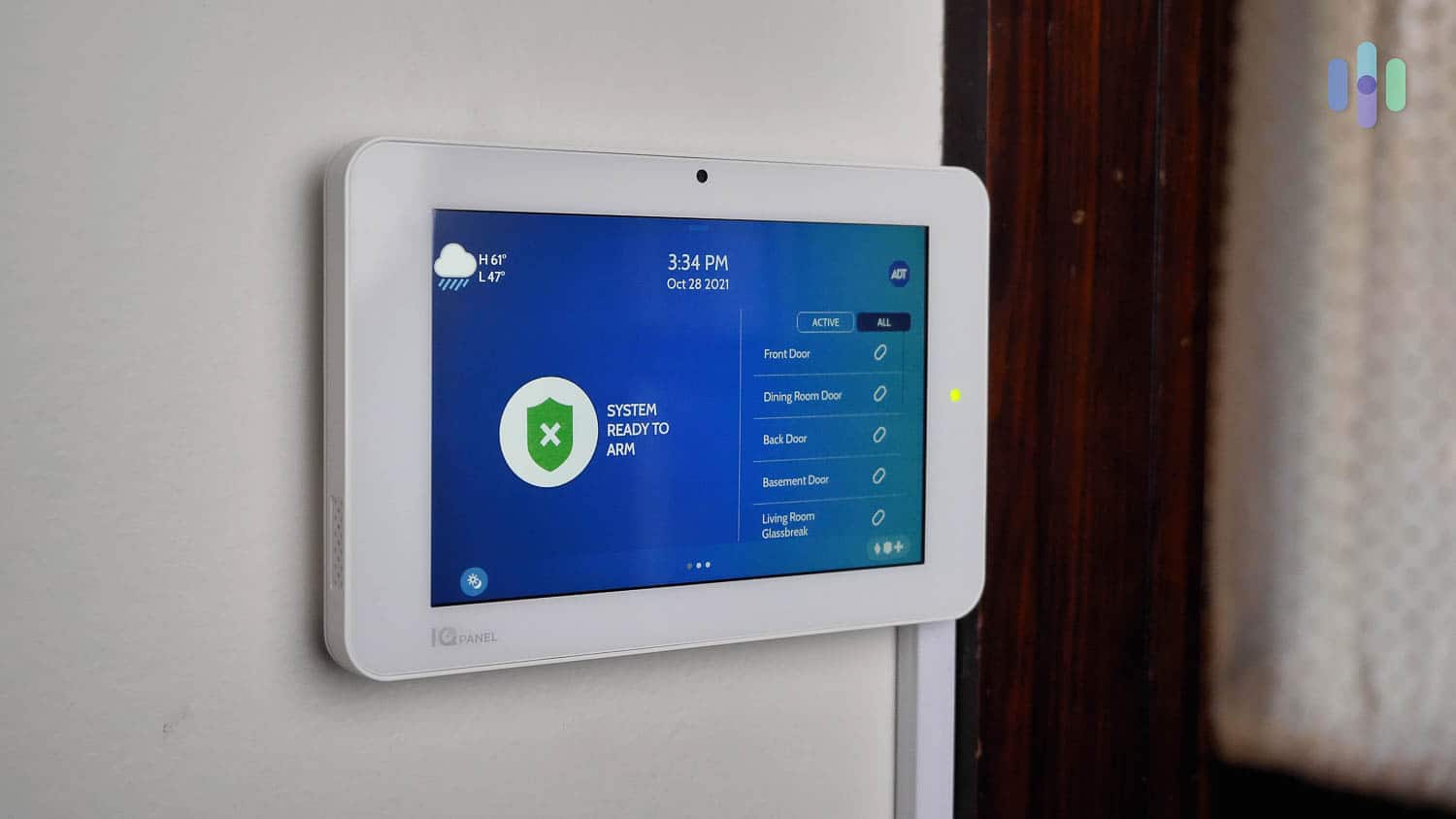Introduction
Welcome to the world of home security systems, where your safety and peace of mind are just a few steps away. In today’s modern era, it has become increasingly important to protect your home and loved ones from potential threats. With advancements in technology, setting up a reliable and efficient home security system has become easier than ever.
Home security systems provide a layer of protection by monitoring your property, detecting suspicious activities, and alerting you in real-time. Whether you live in a standalone house or an apartment, investing in a home security system can significantly enhance your overall safety.
This article will guide you through the process of setting up your very own home security system. We will walk you through the various factors to consider when choosing the right system for your needs, step-by-step instructions for installation, and tips to ensure its proper functioning over time.
By the end of this article, you will have a clear understanding of the components involved in a home security system and the necessary steps to secure your home effectively. So, let’s dive in and take control of your home’s security!
Choosing the Right Home Security System
When it comes to choosing a home security system, there are several factors to consider. Each home has unique needs, so it’s essential to find a system that suits your specific requirements. Here are some key points to keep in mind:
- Budget: Determine how much you are willing to invest in a home security system. Prices can vary significantly depending on the features and sophistication of the system. Set a budget that aligns with your financial capabilities, keeping in mind that security is a long-term investment in your safety.
- Type of System: There are different types of home security systems to choose from, including burglar alarms, CCTV cameras, motion sensors, and more. Assess your security needs and decide which components are essential for your home’s protection.
- Monitoring Options: Consider whether you prefer a professionally monitored system or a self-monitoring solution. Professionally monitored systems involve a monthly fee, but they offer round-the-clock surveillance and professional assistance in case of an emergency.
- Remote Access: Determine whether you want to be able to access and control your home security system remotely. Many systems offer smartphone apps or web portals that allow you to monitor your home’s security status and receive alerts on the go.
- Expandability: Think about future needs and whether the system you choose can be expanded or integrated with other smart home devices. This will allow you to add more features and enhance your home’s security as your needs evolve.
It’s also a good practice to read customer reviews and ratings for different home security systems. This will give you an idea of their reliability and performance from real users.
Take your time to research and compare different options before making a final decision. Remember, the right home security system is the one that fits your budget, meets your security needs, and provides peace of mind for you and your family.
Setting Up and Installing the Security Cameras
Installing security cameras is a crucial aspect of any home security system. They act as the eyes of the system, capturing footage and providing visual surveillance of your property. Here’s a step-by-step guide for setting up and installing your security cameras:
- Positioning: Start by identifying the optimal locations to place your cameras. Consider areas that are vulnerable to intrusion, such as front and back entrances, garages, and windows. Make sure the cameras have a wide field of view and cover critical areas.
- Mounting: Once you’ve determined the camera locations, use the appropriate mounting hardware to secure them in place. Ensure they are mounted at the right height, typically around 9 feet above the ground, to capture clear footage without obstruction.
- Power Source: Determine whether your cameras require a wired or wireless power source. Wired cameras need to be connected to a power outlet, while wireless cameras rely on batteries or solar panels. Ensure the power source is easily accessible and reliable.
- Connectivity: If you have wireless cameras, connect them to your home Wi-Fi network following the manufacturer’s instructions. This will allow you to access the camera feed remotely and receive real-time alerts on your smartphone or computer.
- Adjustment and Testing: After installing the cameras, adjust their angle and focus to capture the desired area effectively. Test the cameras by checking the live feed on your monitoring device to ensure they are capturing clear and crisp footage.
- Recording Options: Determine how you want to store the recorded footage. Many security cameras offer cloud storage options, allowing you to access and review the recordings remotely. Alternatively, you can use a Network Video Recorder (NVR) or Digital Video Recorder (DVR) to store the footage locally.
It’s essential to take necessary precautions during the installation process. Ensure the cameras are weatherproof if they are exposed to the elements and secure any wiring properly. Consult the manufacturer’s guidelines or seek professional assistance if needed.
By following these steps, you can set up and install your security cameras effectively, providing an added layer of visual surveillance to your home security system.
Installing and Configuring the Security Alarms
Security alarms play a critical role in safeguarding your home against unauthorized entry and intruders. Setting up and configuring these alarms is essential to ensure their proper functioning. Here’s a guide to help you install and configure your security alarms:
- Choose Alarm Locations: Identify strategic locations for installing the alarm sensors. Common areas include doors, windows, and any other potential entry points. Ensure that the sensors are easily accessible and properly aligned for effective detection.
- Mounting Sensors: Mount the sensors according to the manufacturer’s instructions and guidelines. Ensure they are securely attached to the door frames or window sills while allowing for easy maintenance and battery replacement.
- Connectivity: Depending on the type of alarm system, ensure the sensors are connected to the main control panel using wiring or wireless signals. Test the connectivity to ensure proper communication between the sensors and the control panel.
- Configure Alarm Settings: Access the control panel and configure the alarm settings based on your preferences. Set the alarm activation mode, entry delay timing, and sensitivity levels. Consult the user manual or consult with a professional for assistance with any technical settings.
- Testing and Maintenance: Once the alarm system is installed and configured, conduct thorough testing to ensure its effectiveness. Arm the alarm and test each sensor by opening doors or windows to trigger the alarms. Regularly perform maintenance checks to keep the system in optimal condition.
- Integration with Monitoring System: If you have opted for a professionally monitored alarm system, ensure it is correctly integrated with the monitoring service. Provide the necessary contact information and establish a connection to receive immediate assistance in the event of an alarm activation.
It is crucial to periodically test the alarms to ensure they are functioning correctly. Regularly replace the batteries, clean the sensors, and check for any signs of damage or wear. Additionally, familiarize yourself with the alarm disarm procedures to avoid any false alarms or accidental activations.
By following these steps, you can install and configure your security alarms effectively, providing an added layer of protection to your home security system.
Creating a Home Security System Network
Creating a home security system network involves connecting various components of your system to work seamlessly together. This network allows for centralized control, monitoring, and communication between different devices. Here’s a guide to help you create a robust home security system network:
- Router Placement: Start by ensuring that your router is placed at a central location in your home. This allows for optimal coverage and signal strength throughout your property.
- Wi-Fi Network: Set up a secure Wi-Fi network for your home. Choose a strong password and enable encryption to protect your network from unauthorized access.
- Connectivity: Ensure that all your security devices, such as cameras, alarms, and sensors, can connect to your Wi-Fi network. Follow the manufacturer’s instructions and configure each device to connect to the network.
- Hub or Control Panel: If your security system has a central hub or control panel, connect it to your router using an Ethernet cable. This allows for direct communication between the devices and the control panel.
- Smart Home Integration: If you have other smart home devices, such as smart locks, lights, or thermostats, integrate them into your security system network. This enables you to control and automate multiple aspects of your home’s security through a centralized platform or app.
- Remote Monitoring: Set up remote monitoring capabilities by connecting your security system to a smartphone app or web portal. This allows you to view live footage, receive alerts, and control your security system from anywhere, providing you with peace of mind even when you’re not at home.
It’s important to regularly update the firmware of your security devices to ensure they have the latest security patches and features. Additionally, consider enabling two-factor authentication for any remote access or monitoring apps to enhance the security of your home network.
By creating a robust home security system network, you can effectively centralize control and monitoring, ensuring that all components of your system work together efficiently to protect your home and loved ones.
Integrating Home Automation with Your Security System
Integrating home automation with your security system can offer enhanced convenience, control, and efficiency. By combining these two technologies, you can not only secure your home but also automate various aspects of your daily life. Here’s a guide to help you integrate home automation with your security system:
- Assess Compatibility: Ensure that your security system and home automation devices are compatible. Check if they can communicate and work together seamlessly. This may involve choosing devices from the same brand or ensuring compatibility through common protocols such as Zigbee or Z-Wave.
- Smart Locks: Integrate smart locks into your security system to enhance access control. With smart locks, you can remotely lock and unlock doors, grant temporary access codes, and receive notifications of any unauthorized access attempts.
- Smart Lights: Automate your lighting system to enhance security and energy efficiency. Program your lights to turn on and off at specific times or use motion sensors to activate lights when someone enters a room. This can give the impression that someone is home, deterring potential intruders.
- Smart Thermostats: Integrate smart thermostats to regulate your home’s temperature efficiently. Linking them to your security system can automatically adjust the temperature based on your presence or absence. For example, when your security system is armed, the thermostat can set the temperature to an energy-saving mode.
- Video Doorbells: Connect video doorbells to your security system to easily monitor and communicate with visitors. You can receive notifications on your smartphone when someone rings the doorbell, view a live video feed, and even speak to the visitor remotely.
- Voice Control: Utilize voice control assistants such as Amazon Alexa or Google Assistant to command and control your security system and home automation devices using voice commands. This brings a new level of convenience and hands-free operation.
Take the time to plan and configure your home automation integration based on your specific needs and preferences. Experiment with different automation routines and adjust them as needed to optimize your home’s security and convenience.
Remember to prioritize security when integrating home automation with your security system. Use strong, unique passwords for your devices, enable multi-factor authentication, and regularly update firmware to ensure a secure smart home environment.
By integrating home automation with your security system, you can elevate the level of control and convenience while enhancing the overall security and efficiency of your home.
Monitoring and Controlling Your Security System Remotely
One of the key benefits of a modern home security system is the ability to monitor and control it remotely. With remote access, you can stay connected to your security system and keep tabs on your home’s security status, no matter where you are. Here’s a guide to help you monitor and control your security system remotely:
- Smartphone Apps: Install the dedicated smartphone app provided by your security system manufacturer. This app acts as a central hub for controlling and monitoring your security system. It allows you to access real-time camera feeds, receive instant alerts, and remotely arm or disarm your system.
- Web Portals: If the security system offers a web portal, you can access it through a computer or laptop. Web portals provide similar functionality to smartphone apps, allowing you to monitor and control your system remotely through a browser.
- Real-Time Alerts: Set up real-time alerts on your smartphone or email for specific events, such as motion detection, door/window breaches, or alarm activations. This ensures that you receive immediate notifications whenever there is an activity or potential security threat.
- Access Control: If your security system includes smart locks, you can remotely lock and unlock your doors via the smartphone app or web portal. This can be useful for granting access to guests or service providers when you’re not at home.
- Video Monitoring: Use the remote access feature to view live camera feeds from your security cameras. This allows you to keep an eye on your property, check for any suspicious activities, or simply monitor the well-being of your loved ones or pets.
- System Status: Check the status of your security system remotely. This includes verifying if the alarms are armed or disarmed, whether any sensors have detected any activity, or if there are any issues with the system that require attention.
It is essential to ensure that your remote access is secure. Use strong passwords for your accounts, enable two-factor authentication whenever possible, and regularly update the security system firmware to protect against vulnerabilities.
By utilizing the remote monitoring and control capabilities of your security system, you can have peace of mind knowing that you can keep an eye on your home’s security status and take immediate action if needed, no matter where you are.
Upgrading and Expanding Your Home Security System
As technology continues to evolve, it’s important to periodically review and upgrade your home security system to ensure it remains effective in protecting your home. Additionally, you might consider expanding your system to meet changing security needs or accommodate new features. Here are some considerations for upgrading and expanding your home security system:
- Assess Your Current System: Evaluate the performance and features of your existing system. Identify any limitations, such as outdated technology, insufficient coverage, or a lack of desired functionalities. This assessment will help you determine which components need upgrading or additional features you may want to incorporate.
- Research New Technologies: Stay updated on the latest advancements in home security technology. Research new products and features that can enhance the security of your home, such as advanced motion sensors, facial recognition cameras, or smart home integrations. Consider how these technologies align with your security needs and budget.
- Expand Coverage: If you’ve identified areas of your property that are not adequately covered by your current security system, consider expanding the number of cameras or sensors. This ensures comprehensive surveillance and detection across your entire property, minimizing blind spots.
- Integrate New Devices: If you have recently added new smart devices to your home, such as smart door locks, smart lighting, or voice assistants, explore ways to integrate them into your security system. This integration can create a more cohesive and efficient smart home ecosystem.
- Professional Monitoring: If you currently have a self-monitored system, upgrading to professional monitoring can provide an additional layer of security. Professional monitoring services can dispatch authorities in the event of an alarm activation, providing a rapid response to potential threats.
- Backup Power and Connectivity: Enhance the reliability of your security system by adding backup power and connectivity options. This ensures that your system stays operational during power outages or internet disruptions, maintaining continuous protection for your home.
- Consult a Professional: If you’re unsure about the best upgrades or expansions for your home security system, it’s advisable to consult with a professional security provider. They can assess your needs, recommend suitable solutions, and assist with the installation and configuration process.
Remember to consider the scalability of your system, allowing for future expansions as your security needs may change over time. Regularly review and update your security system to keep pace with advancements and ensure your home remains well-protected.
By upgrading and expanding your home security system, you can take advantage of the latest technologies and features to improve the overall security and peace of mind for you and your family.
Maintenance and Troubleshooting Tips
Regular maintenance and troubleshooting are essential to keep your home security system running smoothly and effectively. By following these tips, you can ensure that your system remains reliable and provides the level of protection you need:
- Perform Regular System Checks: Schedule periodic checks of your security system to ensure all components are functioning correctly. Verify camera angles, test alarm sensors, and ensure that all devices are properly connected to the control panel.
- Replace Batteries: Regularly inspect and replace batteries in your security devices, such as cameras, sensors, and control panels. Low batteries can cause system malfunctions or interruptions in functionality.
- Clean Camera Lenses: Keep your camera lenses clean to maintain clear and crisp video quality. Use a soft, lint-free cloth to gently wipe away any dirt or smudges that may accumulate over time.
- Update Firmware: Stay up to date with the latest firmware updates for your security system. Manufacturers often release updates to address bugs, security vulnerabilities, and introduce new features. Regularly check for firmware updates and install them as needed.
- Test Alarm System: Test your alarm system regularly to ensure it is working correctly. Activate the alarm and verify that the sirens or other notification methods are functioning properly. This helps ensure that the alarm will be effective in alerting you and deterring potential intruders.
- Secure Network: Protect your home security system by securing your Wi-Fi network. Set a strong password and enable encryption to prevent unauthorized access to your system or interference with your camera feeds.
- Review Logs and Alerts: Monitor the logs and alerts generated by your security system regularly. This allows you to stay informed about any unusual activities, potential system malfunctions, or tampering attempts.
- Keep Entry Points Clear: Ensure that any doors, windows, or entry points covered by sensors are clear of obstructions. Objects blocking the sensors can affect the functionality and accuracy of the security system.
- Document Emergency Contacts: Maintain an updated list of emergency contacts, including your security system provider, emergency services, and trusted neighbors or family members who can assist in case of an emergency.
- Stay Informed: Keep yourself informed about the latest security trends, best practices, and new technologies. Regularly educate yourself on how to use and optimize your security system for maximum effectiveness.
If you encounter any issues or are unsure about troubleshooting certain problems, consult the user manual for your security system or contact the manufacturer’s customer support for assistance.
By following these maintenance and troubleshooting tips, you can ensure that your home security system remains in optimal condition, providing reliable protection for your home and peace of mind for you and your family.
Conclusion
Creating a robust and effective home security system is crucial for ensuring the safety and protection of your home and loved ones. By following the steps outlined in this article, you can set up, install, and maintain a reliable security system that gives you peace of mind.
Start by selecting the right home security system that aligns with your budget and meets your specific security needs. Consider factors such as the type of system, monitoring options, remote access capabilities, and expandability.
Take the time to properly install and configure your security cameras and alarms to ensure optimal coverage and functionality. Position the cameras strategically and mount them securely, and connect the alarms to create comprehensive security layers for your home.
Integrate home automation with your security system to enhance convenience and control. Automate lighting, door locks, thermostats, and other smart devices to create a cohesive and efficient security ecosystem.
Keep a close eye on your security system by monitoring and controlling it remotely. Use smartphone apps or web portals to access real-time camera feeds, receive alerts, and control the system from anywhere, at any time.
Regularly upgrade and expand your home security system to take advantage of new technologies and features. Stay informed about advancements in the industry and consider professional assistance to ensure your system remains up to date with the latest standards.
Maintaining and troubleshooting your security system is key to its longevity and effectiveness. Regular checks, battery replacements, firmware updates, and system tests are essential for ensuring optimal performance.
Remember, a home security system is an investment in your safety and peace of mind. By following the guidelines and tips provided in this article, you can create a comprehensive security system that protects your home, deters potential threats, and provides you with the confidence and comfort you deserve.







